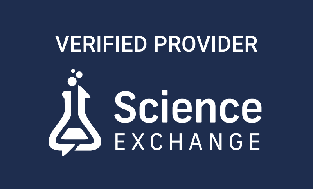Preclinical drug development involves the use of several in vitro and in vivo models to screen and validate new therapeutic modalities. The most widely used in vitro models are cell based and two-dimensional (2D) cell culture models are commonly used to identify and screen new therapies. However, cell culture monolayers have limited translational value as they do not fully recapitulate complex tissue architecture and function. Organoids are more physiologically relevant cell-based models as they are three-dimensional (3D) cell clusters that self-organize to form functional tissues and mini-organs1. Organoids are typically derived from stem cells that have the ability to proliferate and differentiate into multiple cell types. Stem cells are derived from 3 sources – embryonic stem (ES) cells, adult stem (AS) cells or induced pluripotent stem (iPS) cells. The use of ES cells raises ethical and regulatory issues while AS cells are limited to specific tissues like the intestine. However, the development of iPS cells has revolutionized the field of organoid development from various tissues and are also the source of patient-derived organoids.
Patient-derived organoids (PDOs) are referred to as “disease in the dish” that contain all the genetic drivers for a given disease state. PDOs are considered to be better models compared to organoids generated from healthy tissues that are manipulated or stimulated to induce the development of the disease phenotype. PDOs facilitate the understanding of genetic and disease development differences in patient populations, which can be an advantage and a challenge. There can be multiple underlying mechanisms for a given disease, and PDOs allow granular analysis of disease development in different patient segments, which is very useful information for personalized therapies. Conversely, having several PDO populations poses analytical and statistical challenges as it can be tricky to analyze several PDOs derived from one tumor indication. However, PDOs are ideal for precision oncology where therapeutic regimens are customized for individual patients. Another important application of PDOs is to support the understanding of drug-gene interactions at the individual patient level2. This gives information on whether a patient can metabolize and distribute a drug sufficiently or whether there are adverse interactions between two drugs in a specific patient.
PDOs derived from human tumors are steadily becoming an established platform for preclinical validation of cancer drug assets. Currently, PDOs are available for several tumor indications including liver, prostate, breast, colon and pancreatic, and the list of indication specific PDOs is expected to grow. PDOs from tumor tissues start with the culture of small pieces of tumors in a hydrogel or scaffold and specialized media to support the growth of 3D constructs. The cultured PDOs can be bio-banked to support cancer research and are very valuable research models to study disease biology or altered signaling due to the presence of one or more disease drivers.
However, PDOs have some limitations in that they do not fully recapitulate the tumor microenvironment and lack vasculature. Several strategies are being used to overcome this challenge including complex co-culture systems with stroma, plasma growth factors and immune cells. Recently, Xilis, a precision oncology has started developing PDOs using their MicroOrganoSphere or MOS technology that encapsulates the native tumor microenvironment in droplets3. The company combines organoid development methods from the Hubrecht Institute in the Netherlands and the MOS technology developed at Duke University. Xilis’ platform supports the culture of the tumor organoids in the patient’s own microenvironment in a scalable manner and is being promoted as a complete system to test therapeutic responses and drug interactions. This advancement allows the identification of optimal therapies to slow growth or induce tumor killing in 14 days3. The scalability and rapid turnaround time make Xilis’ technology attractive to pharma companies and investors4 to test new therapies or combinations, and has the potential to change how therapeutic regimens are designed for cancer patients.
References:
1Corro C, Novellasdemunt L, Li VSW. A brief history of organoids. American Journal of Physiology-Cell Physiology 2020 319:1, C151-C165.
2Busslinger GA, Lissendorp F, Franken IA, van Hillegersberg R, Ruurda JP, Clevers H, de Maat MFG. 2020 The potential and challenges of patient-derived organoids in guiding the multimodality treatment of upper gastrointestinal malignancies. Open Biol. 10: 190274.


